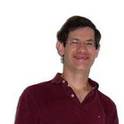| Present | Professor, Department of Chemistry, University of Massachusetts Amherst | |
|
|
||
Disciplines
Research Interests
Contact Information
165 Goessman Laboratory
University of Massachusetts
Amherst MA, 01003
Tel:413-545-6089
Email:
This author has not uploaded works yet.
